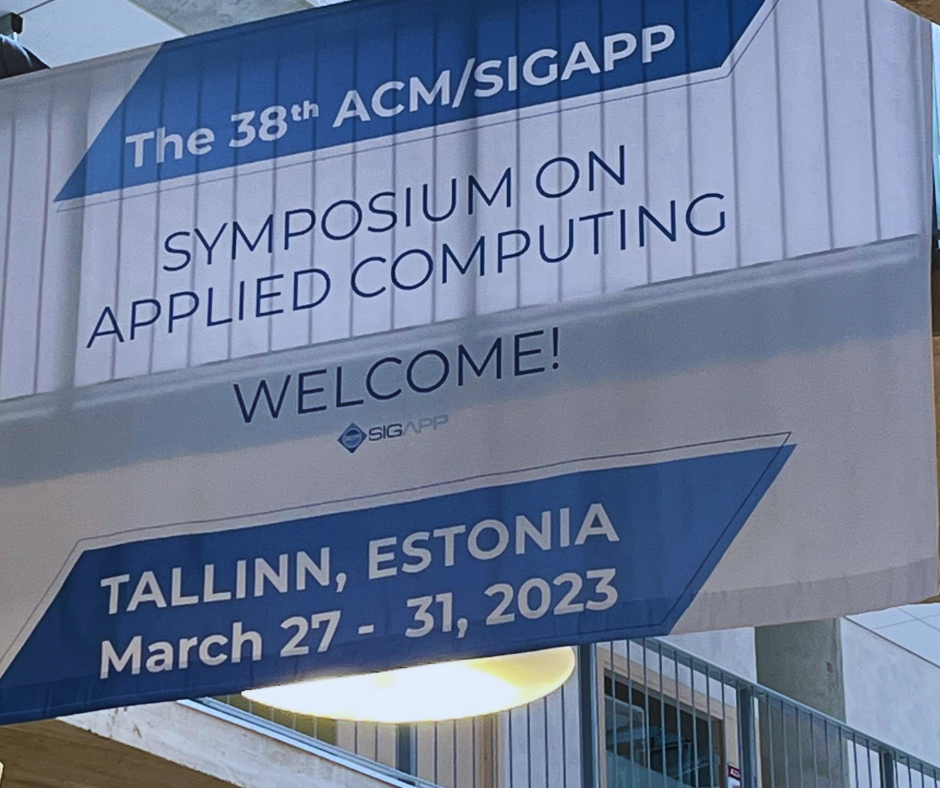The 38th ACM/SIGAPP Symposium on Applied Computing
The 38th ACM/SIGAPP Symposium on Applied Computing started on the 27th of March at Tallinn University. The international conference mainly focuses on applied computing research and brings together computer scientists, engineers, and practitioners from various backgrounds from all over the world to exchange their ideas and methods of applied computing.

The first day of the conference started with workshops under the supervision of Tutorials Chair Associate Professor of Interaction Design in the School of Digital Technologies Vladimir Tomberg. The doctoral student of the Information Society Technologies programme Farhat-ul-Ain who got her master's degree in health psychology presented a workshop called “Interaction Design for Behaviour Change” (DBCI). Farhat talked about the design of DBCIs (Digital interventions for behaviour change) and how knowledge from Behaviour Change theories can be integrated with design practices. “It can be a mobile application that reminds us to take care of our health, gives recommendations and provides the necessary information, but it should be aligned with the user's psychological needs... We need to design a product based on the psychological needs of the users. At the same time, we have to understand that we can’t add all possible features to one application, so we have to choose exactly the ones which are most suitable for the particular user”, - mentioned Farhat and added: “That's why when UX designers do product design; they have to consider all those behavioural change theories. However, designers often lack methods that can capture insights from behaviour change theories. We have to enrich interaction design methods with behaviour change theory to support interaction designers in designing theory-based DBCIs. Farhat’s tutorial also included a brief introduction to intervention and interaction design, the potential limitations of current practices of designing DBCIs, and an approach and guidelines that can help combine intervention and interaction design. The presentation finished with design exercises for the participants and a discussion about the design-related challenges of DBCIs.
During the first day It was also possible to participate in Alexander Bakhtin’s and Prof. Davide Taibi’s workshop “Microservice API pattern detection with call graphs” University of Oulu, Sandeep K.S. Gupta’s and Ayan Banerjee’s workshop “Safe and Certifiable software design for Trustworthy AI-enabled Cyber-Physical Systems” Arizona State University (ASU) and Tomas Cerny’s and his research team members (Patrick Harris, Mia Gortney and Amr El-Sayed) workshop ”Microservice-Based System Visualization Methodology” Baylor University.
In addition to workshops, the conference also included a Student Research Competition (SRC) program coordinated by the lecturer of the School of Digital Technologies Mati Mõttus. The SRC program provides students with the opportunity to meet and exchange ideas with researchers and practitioners in their areas of interest. Also, an important part of the symposium was the special track on Artificial Intelligence for Education presented by the Associate Professor in the Centre for Educational Technology Danial Hooshyar and Professor in the Centre for Educational Technology Mart Laanpere. The aim of the track is to bring together researchers and practitioners to discuss advances, challenges, and future directions of artificial intelligence for education.

ACM/SIGAPP Symposium on Applied Computing provides a great platform for researchers and professionals to share their insights and contribute to the advancement of the field.
The conference will finish on the 31st of March with a big banquet in the Maritime Museum, Tallinn.